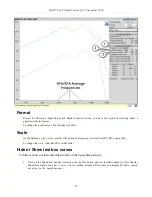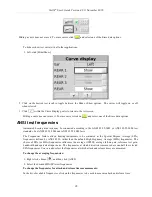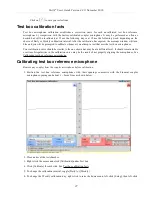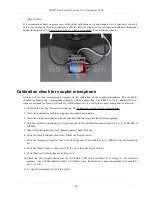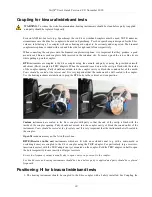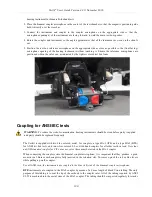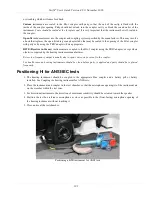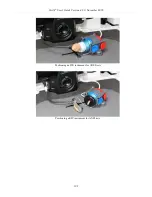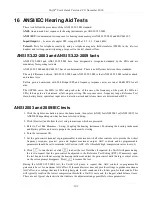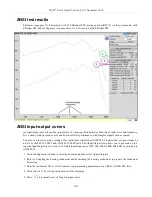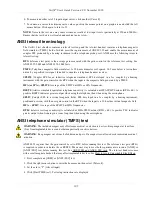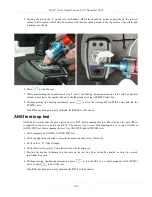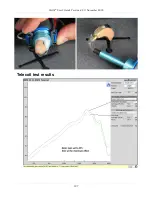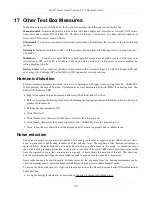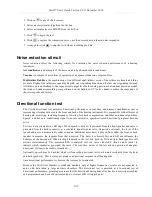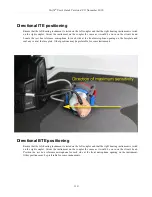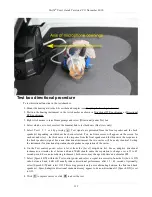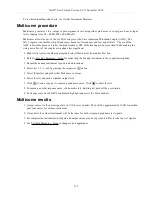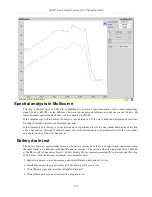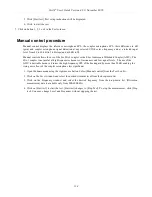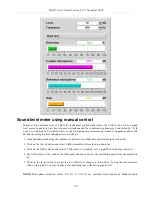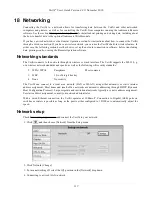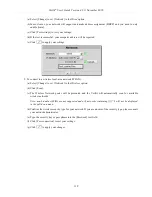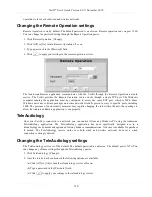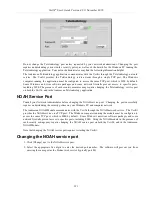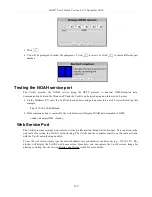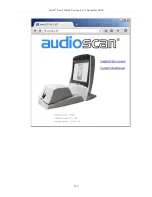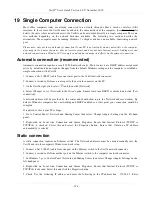
Verifit
®
User's Guide Version 4.8
©
November 2016
2. Click on
in any of the test areas.
3. Select a noise stimulus type from the list box.
4. Select a stimulus level in dB SPL from the list box.
5. Click
to begin the test.
6. Click
to capture the comparison curve once the noise reduction function has responded.
7. At any point click
to stop the test without recording any data.
Noise reduction stimuli
Noise reduction offers the following stimuli for evaluating the noise reduction performance of a hearing
instrument.
Air conditioner
is an example of the noise created by a household air conditioner.
Vacuum
is a sample of noise from th operation of a vacuum cleaner on a carpeted floor.
Multi-talker Babble
is the combination of ten different adult talkers; seven of the talkers are female and three
are male. Eight of the talkers are speaking English, one is speaking French, and the last one is speaking German.
All talkers were normalized to the same overall output level before being positioned at random positions around
the listener. Loudness smoothing was performed on the babble in 1/3
rd
octave bands to reduce the magnitude of
short-term peaks and valleys.
Directional function test
The Verifit directional test measures directional performance in real-time and displays simultaneous curves
representing stimulus delivered to the front and back of the hearing instrument. It is compatible with all forms of
hearing aid processing, including frequency lowering, feedback compensation, and other non-linear algorithms.
Speech is added as a conditioning signal to ensure automatic, speech-activated directional programs become
active.
Test levels are selectable in 5 dB steps. When speech is active it is presented from the front speaker and noise is
presented from the back speaker(s) at a selectable signal-to-noise ratio. At periodic intervals, the level of the
speech and noise is momentarily reduced and an additional noise burst is played from either the front or back
speaker to measure the response from that direction. This burst is extremely fast and will not influence the
behavior of the hearing aid. When testing binaurally in the test box, both the left and right back speakers will
activate simultaneously. The measured SPL is analyzed into two curves labeled F (front) and B (back) to
indicate which speaker(s) generated the curve. The real-time nature of the test allows operation of adaptive
directional systems to be readily visualized.
Optionally, speech may be disabled which will cause the directional test to alternate noise bursts from the front
and back speaker(s). This test may not produce a directional response in all hearing aids.
Once directional performance is observed the test may be terminated.
Because the Verifit test chamber is small and anechoic only at higher frequencies, results are not expected to
agree with data taken in large anechoic chambers. The directional test is provided as a functional test of
directional performance, providing assurance that the directional microphone array has been correctly assembled
and programmed and has not deteriorated due to element drift or clogged ports.
109
Summary of Contents for verifit
Page 1: ...Audioscan Verifit User s Guide 4 8 November 2016...
Page 17: ...Verifit User s Guide Version 4 8 November 2016 EC Declaration of Conformity 17...
Page 92: ...Verifit User s Guide Version 4 8 November 2016 92...
Page 94: ...Verifit User s Guide Version 4 8 November 2016 94...
Page 107: ...Verifit User s Guide Version 4 8 November 2016 Telecoil test results 107...
Page 123: ...Verifit User s Guide Version 4 8 November 2016 123...
Page 148: ...Verifit User s Guide Version 4 8 November 2016 148...
Page 149: ...Verifit User s Guide Version 4 8 November 2016 149...
Page 159: ...Verifit User s Guide Version 4 8 November 2016 159...

